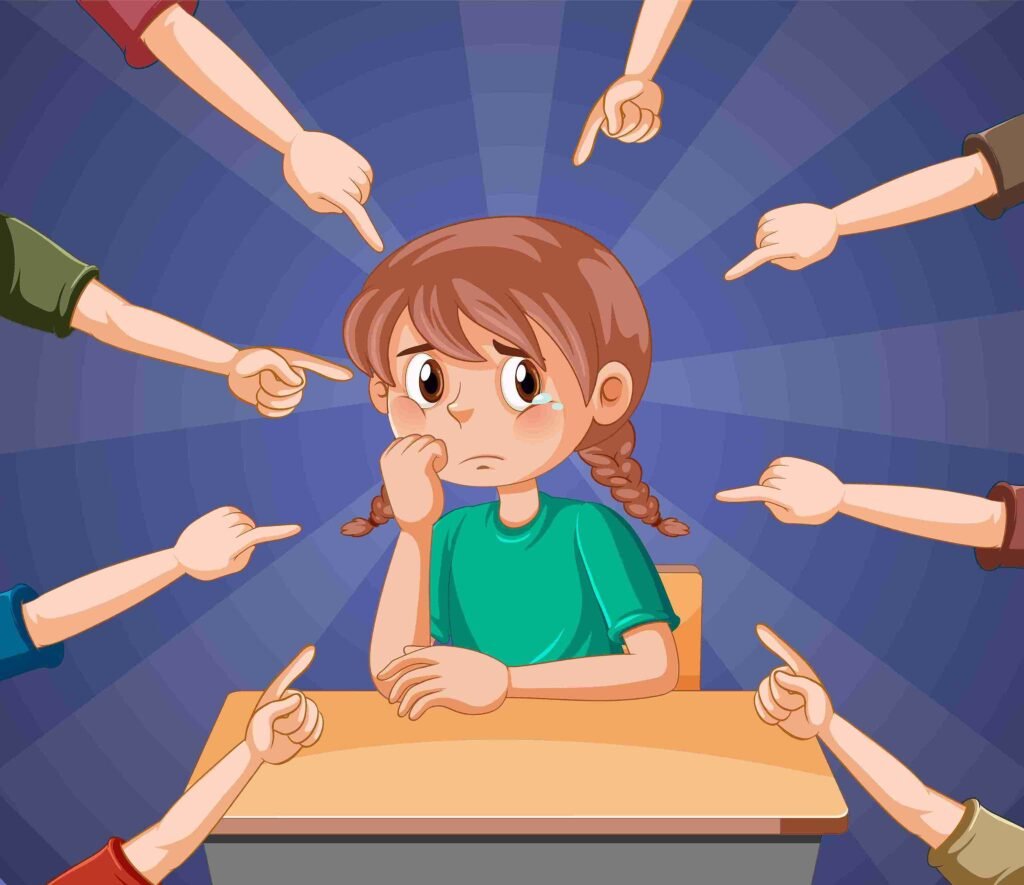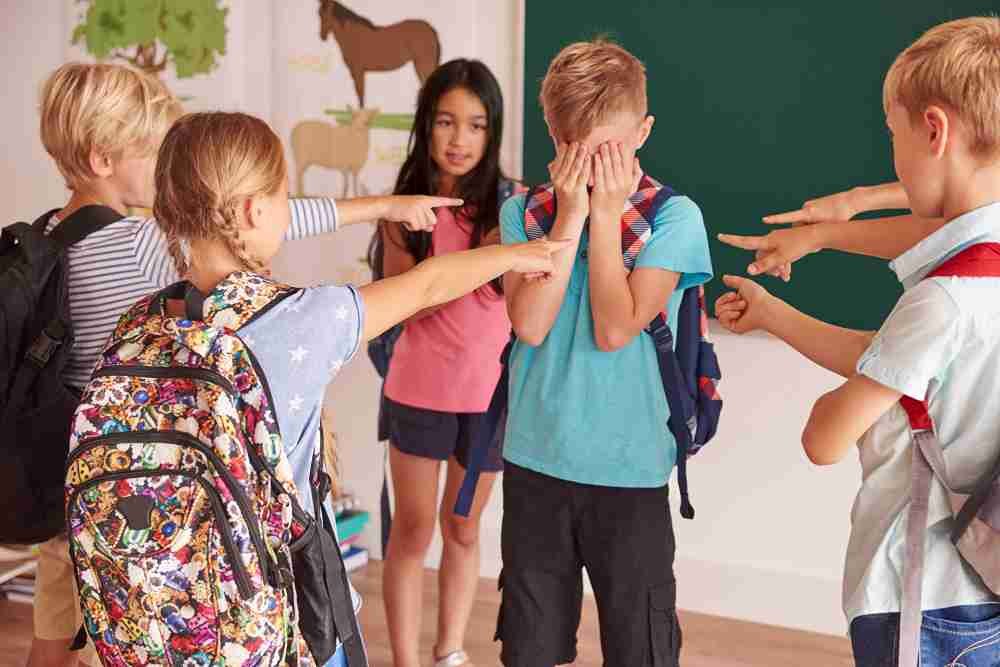Dealing with bullying as a teacher is a pervasive issue that can profoundly impact students’ well-being and academic success. To foster a safe and conducive learning environment, it is essential for teachers to address bullying effectively and promote positive behavior among students. This article aims to explore teachers’ experiences in dealing with bullying incidents and to present effective strategies that educators can employ to create a nurturing and respectful classroom atmosphere. By understanding the challenges they face and implementing proactive measures, teachers play a crucial role in building a school culture that empowers students and discourages bullying behaviors.
Teachers' Experiences with Bullying

- Teachers often face emotionally challenging situations related to bullying, which can significantly impact classroom dynamics. Witnessing instances of bullying among students can evoke feelings of helplessness and require a delicate balance in addressing such incidents to ensure the well-being of both victims and bullies.
- Supporting students affected by bullying can take an emotional toll on educators, draining their energy. Additionally, bullying behaviors can disrupt classroom management, thus impeding the learning process. As frontline witnesses to these incidents, teachers play a critical role in fostering a safe and inclusive learning environment while providing support to students navigating through these difficult situations.
Importance of Promoting Positive Behavior As A Teacher
Promoting positive behavior as a teacher is of utmost importance as it fosters a conducive and harmonious learning environment that supports students’ social-emotional development and academic success. When positive behavior is encouraged, students feel safe, respected, and engaged in the learning process. A positive classroom climate enhances students’ motivation to participate actively, collaborate with peers, and take ownership of their learning.
Moreover, promoting positive behavior cultivates essential life skills, such as empathy, communication, and problem-solving, which are crucial for students’ personal growth and future success. A respectful and supportive school culture not only enhances academic outcomes but also nurtures students’ overall well-being, shaping them into responsible and caring individuals who contribute positively to society.
What is Bullying and Its Types?

| Type | Description |
|---|---|
| Physical Bullying | Physical actions such as hitting, punching, kicking, or any form of physical harm. |
| Verbal Bullying | Verbal abuse, including name-calling, teasing, taunting, or making threats. |
| Relational Bullying | Manipulating relationships, spreading rumors, social exclusion, or damaging someone’s reputation. |
| Cyberbullying | Using electronic communication to harass, threaten, or embarrass someone, often through social media, text messages, or online forums. |
| Sexual Bullying | Unwanted sexual comments, advances, or physical acts that are meant to intimidate, embarrass, or humiliate. |
| Prejudicial Bullying | Targeting individuals based on their race, religion, ethnicity, sexual orientation, or other characteristics. |
Bullying is a form of aggressive behavior that involves the intentional and repeated use of power, such as physical strength, popularity, or technology, to harm, intimidate, or control others. It is a serious issue that can occur in various settings, including schools, workplaces, and online platforms. Bullying can have significant and long-lasting negative effects on the well-being and mental health of those involved, including the targets, bystanders, and even the bullies themselves.
BULLYING: GUIDELINES FOR TEACHERS
1. Encouraging Positive Behavior in the Classroom
Encouraging positive behavior in the classroom is essential for creating a conducive and respectful learning environment. Teachers can foster positive behavior by implementing a range of strategies that promote a culture of respect, responsibility, and cooperation. One effective approach is to use positive reinforcement, acknowledging and praising students for demonstrating good behavior, participation, and effort.
Engaging students in cooperative learning activities that encourage teamwork and mutual respect can also promote positive interactions among peers. Teaching emotional regulation and self-awareness skills equips students with tools to manage their emotions constructively and maintain a positive classroom atmosphere. By modeling positive behavior and consistently reinforcing expectations, teachers play a pivotal role in shaping a classroom culture where students feel valued, motivated, and empowered to thrive academically and socially.
2. Teacher Professional Development and Support
Teacher professional development and support are crucial components of fostering effective teaching practices and promoting continuous improvement. Providing teachers with ongoing opportunities for learning and growth helps them stay current with the latest research, teaching methodologies, and best practices. Through workshops, seminars, conferences, and collaborative learning communities, teachers can deepen their subject knowledge, enhance their instructional strategies, and acquire new tools to address the evolving needs of their students.
Moreover, offering a supportive environment where teachers can share experiences, seek guidance, and collaborate with colleagues fosters a sense of professional camaraderie and empowers them to tackle challenges more effectively. Administrators play a vital role in providing resources, time, and encouragement for professional development, recognizing that investing in teachers’ growth ultimately leads to improved student outcomes and a stronger educational community.
3. Building Strong Teacher-Student Relationships
A supportive teacher-student relationship can act as a powerful deterrent to bullying. Nurturing connections with students fosters trust and encourages them to confide in educators.
Investing time in building meaningful relationships creates a sense of belonging among students. When they feel understood and supported, the likelihood of bullying diminishes, creating a conducive learning environment.
4. Implementing Anti-Bullying Programs
Incorporating anti-bullying programs into the curriculum can be an effective proactive measure. These programs raise awareness, educate students on empathy, and provide tools to address bullying.
Anti-bullying programs contribute to a culture of respect and understanding. By integrating them into the educational framework, teachers empower students with the knowledge and skills to combat bullying collectively.
5. Promoting Open Dialogue with Students
Encouraging open conversations about bullying helps create a culture where students feel comfortable sharing their experiences. This transparency aids in early intervention and resolution.
Open dialogue fosters an environment where students can voice their concerns without fear. Teachers, acting as facilitators, can address issues promptly, fostering trust and creating a culture of open communication.
6. Case Studies and Success Stories
Case studies and success stories provide valuable insights into the effectiveness of anti-bullying and positive behavior promotion strategies. One compelling case study may showcase a school that implemented a comprehensive bullying prevention program, resulting in a significant reduction in bullying incidents and an improvement in the overall school climate.
The success story could feature a teacher who actively promoted positive behavior in their classroom, fostering a nurturing environment where students felt supported and valued. Through the teacher’s consistent use of positive reinforcement and implementing social-emotional learning activities, students demonstrated increased empathy and respect towards one another, leading to improved peer relationships and academic engagement. These case studies and success stories serve as powerful examples that inspire other educators and schools to adopt similar evidence-based strategies, reinforcing the importance of addressing bullying and promoting positive behavior to create safe and inclusive learning environments.
Challenges in Addressing Bullying As A Educators

Addressing bullying poses several significant challenges for educators and school communities. These obstacles can impede the effectiveness of anti-bullying efforts and require careful consideration and proactive strategies. Some of the key challenges in addressing bullying include:
- Underreporting: Many victims of bullying may hesitate to report incidents due to fear of retaliation, embarrassment, or a lack of trust in the system. This underreporting makes it difficult for educators to identify and intervene in bullying situations promptly.
- Complexity of Bullying Dynamics: Bullying can be a complex social issue with various factors at play, such as power imbalances, peer pressure, and group dynamics. Understanding and addressing these intricate interactions can be challenging.
- Cyberbullying: The prevalence of cyberbullying has increased with the rise of technology and social media. Addressing cyberbullying requires navigating the complexities of online spaces and balancing students’ digital rights with safety concerns.
- Inconsistent Responses: Inconsistent responses from educators or administrators to bullying incidents can undermine the effectiveness of anti-bullying efforts. A lack of uniformity in consequences or a failure to take action may send mixed messages to students.
- Peer Pressure and Bystander Effect: Bystanders may hesitate to intervene in bullying situations due to peer pressure or a belief that someone else will step in. Encouraging bystander intervention and empowering students to be allies is essential but can be challenging.
- Time Constraints: Addressing bullying incidents and implementing preventive measures require time and resources. Educators may struggle to balance these efforts with their other teaching responsibilities.
- Parental Involvement: Gaining parental support and involvement in anti-bullying initiatives is crucial. However, some parents may not be fully aware of their child’s behavior or may be hesitant to acknowledge bullying tendencies.
- Cultural and Social Norms: Some cultural or social norms may tolerate or even perpetuate bullying behaviors. Addressing these ingrained attitudes can be a sensitive and complex undertaking.
- Staff Training and Awareness: Ensuring that all staff members are well-trained and aware of bullying prevention and intervention strategies is essential for a cohesive and effective approach.
- Safeguarding Targets: Protecting the safety and emotional well-being of targets of bullying requires careful and confidential handling of incidents.
Effective Strategies for Addressing Bullying As A Teacher

Effective strategies for addressing and stopping bullying require a multi-faceted and proactive approach that involves the entire school community. By implementing evidence-based strategies, educators can create a safe and inclusive environment that fosters positive relationships and prevents bullying behaviors. Here are some effective strategies for addressing bullying:
- School-Wide Anti-Bullying Policies: Develop and enforce clear anti-bullying policies that outline expectations, consequences, and reporting procedures. Communicate these policies to all students, staff, and parents.
- Bullying Prevention Programs: Implement evidence-based bullying prevention programs that focus on promoting empathy, conflict resolution, and positive social interactions. These programs can be integrated into the curriculum or delivered through special workshops.
- Increase Awareness and Education: Educate students, staff, and parents about the different forms of bullying, its impact, and the importance of reporting incidents. Increasing awareness helps create a united front against bullying.
- Empower Bystanders: Teach students how to be active bystanders and encourage them to report bullying incidents. Empowering bystanders can help reduce the prevalence of bullying by creating a culture where everyone takes responsibility for each other’s well-being.
- Establish Supportive Relationships: Cultivate strong teacher-student and peer relationships based on trust and respect. Positive relationships create a sense of belonging and safety, making it less likely for bullying to occur.
- Responsive and Confidential Reporting: Create a confidential reporting system for students to report bullying incidents without fear of retaliation. Ensure that all reports are taken seriously and addressed promptly.
- Consistent Consequences: Enforce consistent consequences for bullying behaviors to send a clear message that such actions are not tolerated. Consistency is crucial in creating a safe and fair learning environment.
- Involve Parents and Guardians: Collaborate with parents and guardians to address bullying. Encourage open communication and partnership in addressing bullying incidents both in and outside of school.
- Digital Citizenship Education: Teach students about responsible and ethical online behavior to combat cyberbullying. Encourage students to be respectful and kind in their digital interactions.
- Restorative Practices: Implement restorative practices that focus on repairing harm caused by bullying incidents and promoting empathy and understanding among those involved.
- Peer Mediation: Train selected students to serve as peer mediators to help resolve conflicts peacefully and amicably.
- Staff Training: Provide ongoing professional development for staff on recognizing and addressing bullying behaviors, as well as effective classroom management strategies.
Conclusion:
Stopping bullying and promoting positive behavior are integral components of creating a healthy and thriving learning environment. By sharing experiences and adopting effective strategies, teachers can foster a positive classroom climate that nurtures students’ social-emotional development and academic growth. Collaborative efforts between educators, administrators, and students are paramount in combating bullying, enabling schools to become spaces where all students feel safe, respected, and empowered to reach their full potential.